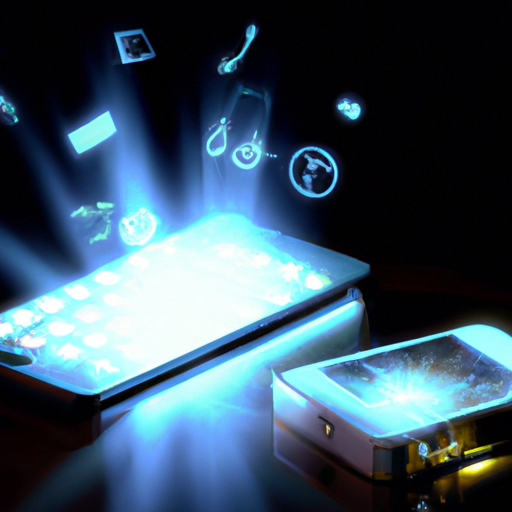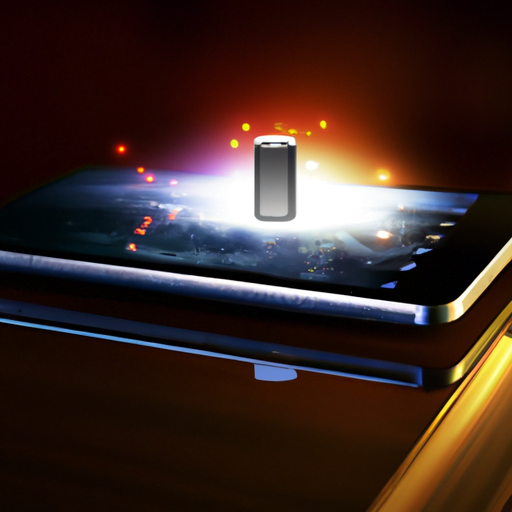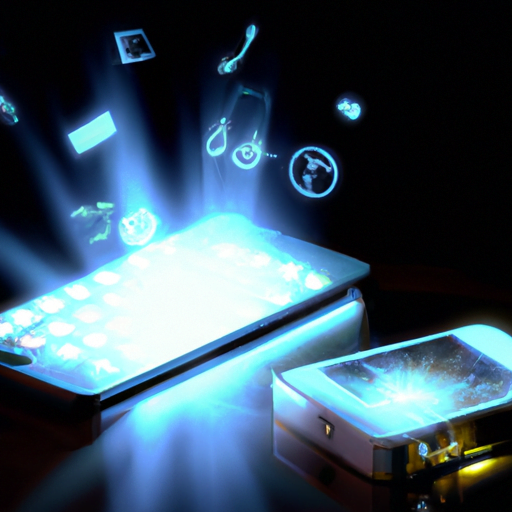So, you’re thinking about living off the grid, huh? No more monthly electricity bills or relying on the power company for all your needs. It sounds pretty tempting, doesn’t it? But here’s the thing – as much as you want to disconnect from the electric grid, you still need that internet connection to stay connected with the world. But how exactly can you get internet without electricity?
Well, it may sound a bit surprising, but it is actually possible to access the internet without relying on traditional electricity. There are alternative methods and technologies available that can help you stay connected even in the absence of power. In fact, in the article that awaits you, you’ll discover some ingenious ways to get internet connectivity without electricity.
From solar-powered systems and battery-powered internet devices to wired alternatives and satellite internet, there are several options at your disposal. It all comes down to your specific needs, location, and budget. So, if you’re ready to find out how to get internet connection without electricity, keep reading and explore the possibilities.

How to Get Internet Connection Without Electricity
Living off the grid can be an incredibly rewarding and liberating experience. It allows you to be self-sufficient, reduce your carbon footprint, and live in harmony with nature. However, one common concern for people considering off grid living is whether they can still have access to the internet without electricity. In this article, we will delve into the various solutions and possibilities for getting an internet connection without electricity.
What is Off Grid Living?
Off grid living refers to a lifestyle where individuals or communities are not connected to the main electricity grid. It involves generating your own electricity through renewable energy sources such as solar power, wind power, or hydroelectric power. Off grid living typically requires a significant change in lifestyle and a higher level of self-sufficiency.
Advantages of Off Grid Living
There are several advantages to living off the grid. Firstly, it allows you to reduce your dependence on fossil fuels and contribute to a cleaner and more sustainable planet. Secondly, it offers you the opportunity to live a simpler and more self-sufficient lifestyle, free from the constraints of modern society. Lastly, living off the grid provides a sense of freedom and peace, being closer to nature and away from the hustle and bustle of urban living.
Challenges of Off Grid Living
While off grid living offers many benefits, it also comes with its own set of challenges. One such challenge is access to modern amenities, such as the internet. Without electricity, it can be difficult to stay connected in a world that is increasingly reliant on digital communication. However, with advancements in technology and innovation, it is now possible to have internet connectivity even in remote off-grid locations.
Availability of Internet Without Electricity
Innovations in Internet Connectivity
In recent years, there have been significant innovations in the field of internet connectivity, making it possible to access the internet without relying on traditional electricity sources. These innovations range from satellite internet to cellular network connectivity, providing options for off grid communities to stay connected with the rest of the world.
Satellite Internet
Satellite internet is one of the most common and effective ways to access the internet in remote areas without electricity. It relies on a satellite dish that receives signals from a satellite orbiting the Earth and then transmits those signals to a modem, which in turn connects your device to the internet. Satellite internet can provide reliable and high-speed internet access, even in the most remote locations.
Cellular Network Connectivity
Cellular network connectivity is another option for getting an internet connection without electricity. In areas with cellular coverage, you can use a smartphone or tablet with a data plan to access the internet. This allows you to connect to the internet through your cellular network provider without the need for a physical connection or electricity. However, it is important to note that cellular coverage may not be available in all off grid areas.
Harnessing Renewable Energy for Internet Connectivity
Solar Power for Internet Connection
Solar power is a popular choice for off grid living, and it can also be used to power your internet connection. By installing solar panels, you can generate electricity during the day and store it in batteries for use at night. This stored energy can then be used to power your internet modem and other devices, ensuring that you have a reliable and sustainable internet connection.
Wind Power for Internet Connection
Wind power is another renewable energy source that can be harnessed for internet connectivity in off grid locations. Wind turbines can generate electricity from the power of the wind, which can then be stored in batteries or used directly to power your internet setup. Wind power is particularly beneficial in areas with consistent and strong winds.
Hydroelectric Power for Internet Connection
If you live near a water source, such as a river or stream, you can consider harnessing hydroelectric power to generate electricity for your internet connection. By installing a small hydroelectric turbine, you can use the flowing water to generate renewable energy, ensuring a reliable and sustainable power source for your internet needs.

Wireless Internet Options Without Electricity
Wi-Fi Hotspots
Wi-Fi hotspots are a convenient option for getting internet access in off grid locations without electricity. Many cafes, libraries, and public places offer free Wi-Fi hotspots, allowing you to connect to the internet using your laptop or smartphone. Additionally, some companies specialize in providing portable Wi-Fi hotspots that can be used anywhere, even in remote areas.
Mi-Fi Devices
Mi-Fi devices, also known as mobile Wi-Fi hotspots, are compact devices that allow you to create a personal Wi-Fi network using a cellular data connection. These devices use a SIM card and provide internet connectivity to multiple devices simultaneously. Mi-Fi devices are battery-powered and can be recharged using various methods, including solar power and power banks.
Wireless Data Plans
Another option for off grid internet connectivity is to subscribe to a wireless data plan from a cellular network provider. These plans typically provide a certain amount of data that can be used on a smartphone or tablet. By using your device as a hotspot, you can share the internet connection with other devices and stay connected even without traditional electricity.
Low-Power Internet Devices
Energy-Efficient Laptops and Computers
To maximize your off grid internet experience, it is important to use energy-efficient devices. Energy-efficient laptops and computers consume less power, allowing you to make the most of your renewable energy resources. Look for devices with Energy Star certification or similar energy-efficient ratings to ensure that you are minimizing your energy consumption.
Low-Power Routers
In addition to energy-efficient laptops and computers, it is also important to use low-power routers for your internet connection. These routers are designed to consume minimal electricity while still providing reliable internet connectivity. Look for routers with energy-saving features and consider using alternative power sources, such as solar or wind power, to power your router.
IoT Devices for Internet Connection
The Internet of Things (IoT) has revolutionized the way we connect and interact with our homes. IoT devices such as smart thermostats, security cameras, and voice assistants can be connected to the internet without consuming excessive amounts of power. By utilizing these low-power IoT devices, you can maintain an internet connection and improve the overall efficiency of your off grid lifestyle.
Energy Storage Solutions for Internet Connectivity
Battery Backup Systems
To ensure uninterrupted internet connectivity, it is essential to have a reliable energy storage system. Battery backup systems, such as deep cycle batteries and power inverters, can store excess energy generated from renewable sources during the day and provide power to your internet setup during the night. These battery backup systems can be connected to your solar panels, wind turbines, or hydroelectric systems.
Power Banks
Power banks are portable battery packs that can be used to charge small devices on the go. They are particularly useful in off grid situations where traditional power outlets are not available. By charging your devices using a power bank during the day, you can conserve energy and ensure that you have sufficient power for your internet needs when the sun goes down.
Energy Storage for the Internet
In addition to battery backup systems and power banks, there are specialized energy storage solutions designed specifically for internet connectivity. These systems are typically compact and can store energy generated from renewable sources for use during low-sunlight or low-wind periods. By investing in an energy storage solution for your internet setup, you can maximize your off grid internet experience.
DIY Solutions for Internet Without Electricity
DIY Solar Internet Setup
If you’re the hands-on type, you can consider building your own solar-powered internet setup. Start by installing solar panels to generate electricity during the day. Connect the solar panels to a charge controller, which will regulate the flow of power to your batteries. Finally, connect your batteries to an inverter, which will convert the stored DC power into AC power for your internet connection.
DIY Wind-Powered Internet Setup
Another DIY option for off grid internet is a wind-powered setup. Begin by installing a small wind turbine in a location with consistent wind flow. Connect the wind turbine to a charge controller to regulate the power input to your batteries. Finally, connect your batteries to an inverter to provide AC power for your internet setup.
DIY Hydroelectric Internet Setup
If you have access to a water source, you can even build a DIY hydroelectric internet setup. Install a small hydroelectric turbine in the flowing water and connect it to a charge controller. Connect the charge controller to your batteries to store the generated power. Finally, use an inverter to convert the stored DC power into AC power for your internet connection.
Best Practices for Internet Use in Off Grid Living
Internet Usage Optimization
When living off the grid, it is important to optimize your internet usage to conserve energy. Avoid bandwidth-intensive activities such as streaming videos or downloading large files. Use websites and applications that are optimized for low-bandwidth connections. By being mindful of your internet usage, you can make the most of your limited resources.
Data Management and Conservation
Data conservation is another important aspect of off grid internet use. Monitor your data usage and avoid unnecessary downloads or updates. Utilize data-saving features on your devices and consider using compression techniques for web browsing and file transfers. By conserving your data, you can minimize your internet-related energy consumption.
Security and Privacy Considerations
When accessing the internet without electricity, it is essential to prioritize security and privacy. Use secure and encrypted connections whenever possible. Regularly update your devices and software to protect against vulnerabilities. Consider using virtual private networks (VPNs) to ensure your online activities remain private and secure.
Overcoming Connectivity Challenges in Remote Areas
Amplifying Signal Strength
In remote off grid areas, weak internet signals can be a common challenge. To overcome this, you can use signal amplification techniques such as using high-gain antennas or signal boosters. These devices help improve signal strength and range, allowing for a more reliable internet connection even in areas with weak signals.
Antenna and Signal Boosting Techniques
Antenna and signal boosting techniques can significantly improve your off grid internet experience. By positioning your equipment strategically or using directional antennas, you can optimize signal reception and transmission. Signal boosters can amplify weak signals, ensuring a more robust internet connection in remote areas.
Collaborative Community Networks
In some off grid communities, residents come together to create collaborative community networks. Through shared infrastructure and resources, these networks provide internet connectivity to multiple households. By pooling their resources, communities can overcome the challenges of off grid living and ensure reliable internet access for all members.
Conclusion
Living off the grid no longer means being completely disconnected from the digital world. With the advancements in technology and renewable energy, it is now possible to have internet connectivity even without traditional electricity sources. Whether through satellite internet, cellular network connectivity, or renewable energy solutions, off grid living can coexist with a connected and modern lifestyle. By implementing the various options and best practices discussed in this article, you can stay connected, informed, and enjoy the benefits of off grid living without sacrificing internet connectivity. So go ahead and embrace the freedom of off grid living with the assurance of staying connected to the world wide web.




